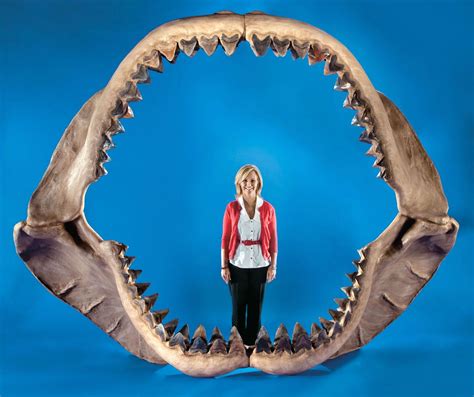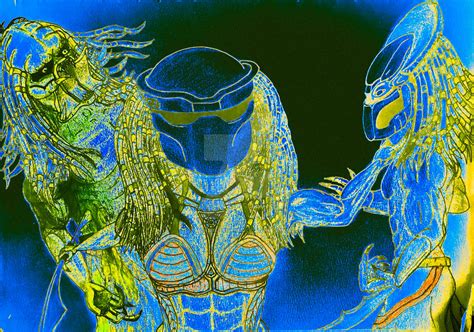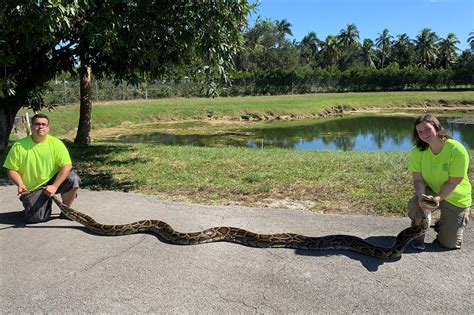
Megalodon, the colossal prehistoric shark that once dominated the oceans, feasted on smaller, agile sharks before its extinction, a new fossil analysis reveals, challenging previous assumptions about its diet. The discovery, based on bite marks found on a 3-million-year-old vertebrae of a smaller shark, suggests that the megalodon’s dietary habits were more diverse and opportunistic than previously thought, potentially contributing to its eventual demise.
The study, published in the journal Palaeogeography, Palaeoclimatology, Palaeoecology, provides direct evidence of megalodon predation on smaller sharks, overturning the long-held belief that the giant predator primarily targeted whales and large marine mammals. Researchers analyzed bite marks on a fossilized centrum (vertebrae) of a Chondrichthyes (cartilaginous fish), specifically a smaller shark, dating back to the Pliocene epoch. These bite marks, characterized by their size, shape, and spacing, are consistent with the dentition and bite force expected of a megalodon, scientifically known as Otodus megalodon.
“This is the first evidence of megalodon preying on a relatively small shark,” said Dr. Christopher Clements, a paleontologist at the University of California, Riverside, and lead author of the study. “Previously, the general consensus was that megalodon primarily fed on large marine mammals such as whales, seals, and dolphins. This fossil find shows that it was more opportunistic and consumed a wider range of prey.”
The discovery has significant implications for understanding the ecological role of megalodon and the factors that may have contributed to its extinction approximately 3.6 million years ago. While the megalodon was undoubtedly an apex predator, its reliance on specific prey, coupled with environmental changes and competition from other predators like the great white shark, could have led to its decline. The newfound evidence suggests that megalodon’s diet was more varied than previously thought. However, this dietary flexibility might not have been sufficient to sustain the massive shark in the face of dwindling food resources and increasing competition.
Challenging Previous Assumptions
For decades, paleontologists have pieced together the megalodon’s life history based on fossil teeth, which are the most commonly preserved remains of sharks due to their durable enameloid composition. These teeth, some reaching over 7 inches in length, indicated that the megalodon was a formidable predator capable of taking down large prey. Indirect evidence, such as bite marks on whale bones, further supported the hypothesis that whales were a primary food source for the megalodon.
However, the recent discovery of bite marks on a smaller shark vertebrae provides direct evidence of a broader dietary range. The researchers meticulously analyzed the bite marks, comparing them to the tooth morphology and bite force of megalodon and other contemporary sharks. The results strongly suggest that the marks were inflicted by a megalodon, indicating that these giant sharks were not exclusively targeting large marine mammals.
“The bite marks are too large and distinct to have been made by any other shark species known to have existed in that region at that time,” explained Dr. Catalina Pimiento, a paleobiologist and co-author of the study. “The spacing and shape of the marks perfectly match the tooth arrangement and bite force of a megalodon. This discovery adds a new dimension to our understanding of megalodon’s feeding ecology.”
Implications for Megalodon’s Extinction
The findings shed new light on the potential factors that contributed to the megalodon’s extinction. Several hypotheses have been proposed, including climate change, competition with other predators, and a decline in prey availability.
Climate change during the Pliocene epoch led to significant shifts in ocean temperatures and sea levels. These changes may have altered the distribution and abundance of the megalodon’s primary prey, making it more difficult for the giant shark to find sufficient food. Additionally, the rise of the great white shark (Carcharodon carcharias) coincided with the megalodon’s decline. The great white shark, a smaller but more agile predator, may have competed with the megalodon for resources, further exacerbating the challenges faced by the giant shark.
The discovery of megalodon predation on smaller sharks adds another layer to this complex picture. While it demonstrates that the megalodon was capable of feeding on a variety of prey, it also suggests that the giant shark may have been struggling to find enough large prey to sustain its massive size. The shift towards smaller prey may have been a desperate attempt to survive in a changing environment, but ultimately it proved insufficient to prevent extinction.
“Our findings suggest that the megalodon’s dietary flexibility may not have been enough to compensate for the loss of its preferred prey,” said Dr. Clements. “The combination of climate change, competition, and a decline in prey availability likely contributed to the megalodon’s demise.”
The study also highlights the importance of examining a wider range of fossil evidence to gain a more complete understanding of ancient ecosystems. While fossil teeth provide valuable information about the size and feeding habits of sharks, they offer limited insights into their dietary preferences and ecological interactions. The discovery of bite marks on smaller shark vertebrae provides a rare glimpse into the complex food web that existed during the Pliocene epoch and the role that the megalodon played within it.
Further Research and Future Directions
The researchers plan to continue their investigation into the megalodon’s diet and ecological role by examining additional fossil specimens and conducting biomechanical analyses of its teeth and jaws. They hope to identify other potential prey species and gain a more precise understanding of the megalodon’s bite force and feeding strategies.
“We are actively searching for more fossil evidence of megalodon predation,” said Dr. Pimiento. “By analyzing a larger sample of fossils, we can build a more comprehensive picture of the megalodon’s diet and its interactions with other marine animals.”
The study also underscores the importance of preserving and protecting fossil sites, as they hold invaluable clues about the history of life on Earth. The discovery of the bite marks on the shark vertebrae was made possible by careful excavation and analysis of fossils collected from a well-known fossil site in Florida.
“Fossil sites are irreplaceable sources of information about the past,” said Dr. Clements. “It is crucial that we protect these sites and continue to support paleontological research so that we can learn more about the history of life on Earth and the factors that have shaped the evolution of our planet.”
The new research significantly enhances our understanding of the feeding habits of the megalodon and its place in the ancient marine ecosystem. This discovery of bite marks on the vertebrae of smaller sharks introduces a new perspective to the scientific community’s understanding of the megalodon’s ecological role. It also offers invaluable insights into the reasons that may have led to its extinction. The revelations provide a more complex narrative of the megalodon’s existence, underscoring the intricacies of prehistoric marine life and the numerous variables that can lead to the extinction of even the most formidable predators. The scientific community’s knowledge of this massive extinct creature is expected to continue growing thanks to ongoing studies and discoveries.
Megalodon: Size and Impact
The Otodus megalodon, meaning “big tooth,” lived from approximately 23 to 3.6 million years ago, spanning the Early Miocene to the Pliocene epochs. The prehistoric shark, now extinct, has captured the human imagination for generations. It was the largest shark ever to live, and one of the largest fish, estimated to have reached lengths of up to 20 meters (66 feet). Its teeth, which can exceed 7 inches in slant height, are commonly found as fossils across the globe. These fossils have provided valuable insights into the shark’s size, distribution, and potential prey. The megalodon was a top predator in the marine ecosystems it inhabited, and its existence had a significant influence on the evolution and distribution of marine mammals.
The scientific community has long debated the exact size of megalodon. Various methods, primarily based on comparisons with extant shark species, have been used to estimate its length. The most accepted estimates suggest a maximum length of around 15-20 meters (49-66 feet). By comparison, the largest reliably measured great white shark was about 6 meters (20 feet) long, making the megalodon approximately three times larger.
The enormous size of the megalodon required it to consume substantial amounts of food. Previous research suggested that it primarily fed on large marine mammals, such as whales, dolphins, and seals. Evidence for this included bite marks found on fossilized whale bones and the geographical distribution of megalodon fossils in areas where whales were abundant. However, the new discovery of megalodon predation on smaller sharks reveals a more complex and opportunistic feeding behavior.
Megalodon vs. Great White Shark: Competition and Coexistence
The rise of the great white shark (Carcharodon carcharias) is often cited as a potential factor in the megalodon’s extinction. While the megalodon was larger and more powerful, the great white shark possessed certain advantages, such as greater agility and adaptability. The great white shark may have been better able to exploit smaller prey and adapt to changing environmental conditions.
The competition between megalodon and great white sharks may have intensified as climate change altered marine ecosystems during the Pliocene epoch. As ocean temperatures and sea levels fluctuated, the distribution and abundance of prey species likely changed, creating increased pressure on both predators. The great white shark’s ability to thrive in a wider range of environments and exploit a broader range of prey may have given it a competitive edge over the megalodon.
However, it’s important to note that the relationship between megalodon and great white sharks was likely complex and multifaceted. The two species may have coexisted for a period, occupying different ecological niches and targeting different prey species. The exact nature of their interactions remains a subject of ongoing research.
The Role of Climate Change in Megalodon’s Extinction
Climate change during the Pliocene epoch played a significant role in shaping marine ecosystems and influencing the fate of marine predators, including the megalodon. The Pliocene was characterized by a period of global cooling, which led to changes in ocean temperatures, sea levels, and current patterns. These changes had a profound impact on the distribution and abundance of marine life, including the megalodon’s primary prey.
As ocean temperatures cooled, many whale species migrated towards higher latitudes in search of more productive feeding grounds. This shift in prey distribution may have made it more difficult for the megalodon to find sufficient food, particularly in regions where it had previously been abundant. Additionally, the cooling temperatures may have affected the megalodon’s metabolic rate and energy requirements, further exacerbating the challenges it faced.
The Pliocene epoch also witnessed significant changes in sea levels, which altered coastal habitats and affected the distribution of marine organisms. The megalodon may have been particularly vulnerable to these changes, as it likely relied on specific coastal habitats for breeding and nursery grounds. The loss or alteration of these habitats could have negatively impacted the megalodon’s reproductive success and contributed to its decline.
New Technologies and Fossil Discoveries
Advances in technology and the ongoing discovery of new fossils are constantly refining our understanding of the megalodon. High-resolution imaging techniques, such as CT scanning and 3D modeling, allow researchers to analyze fossil specimens in greater detail than ever before. These techniques can reveal subtle features, such as bite marks and bone fractures, which provide valuable insights into the megalodon’s feeding behavior and ecological interactions.
The discovery of new megalodon fossils, particularly those that preserve evidence of its soft tissues or stomach contents, could provide even more information about its diet and lifestyle. While fossil teeth are the most commonly found remains of megalodon, rare discoveries of articulated skeletons or preserved tissues can offer unprecedented insights into its anatomy and physiology.
Conservation Paleobiology: Lessons from the Past
The study of extinct organisms, such as the megalodon, can provide valuable insights into the factors that drive extinction and the importance of biodiversity conservation. By understanding the causes of past extinctions, we can better predict and prevent future extinctions. The megalodon’s extinction serves as a cautionary tale about the potential consequences of climate change, habitat loss, and competition for resources.
Conservation paleobiology is an emerging field that applies paleontological data to address contemporary conservation challenges. By studying the fossil record, conservation paleobiologists can identify species and ecosystems that are particularly vulnerable to extinction and develop strategies to protect them. The lessons learned from the megalodon’s extinction can inform conservation efforts aimed at protecting modern sharks and other marine predators.
Megalodon in Popular Culture
The megalodon has captured the human imagination and has become a popular subject in books, movies, and documentaries. The giant shark’s immense size and predatory prowess make it a compelling and terrifying figure. However, it’s important to distinguish between scientific fact and fictional portrayals of the megalodon.
While popular culture often exaggerates the megalodon’s size and ferocity, it also plays a role in raising awareness about the importance of paleontology and marine conservation. By showcasing the wonders of the prehistoric world, popular culture can inspire curiosity and promote a greater appreciation for the natural world.
FAQ: Megalodon’s Last Meals? Fossil Find Upends Shark History!
1. What is the main finding of the new study about megalodon’s diet? The study provides direct evidence that megalodon, the giant prehistoric shark, preyed on smaller sharks, challenging the long-held belief that it primarily fed on whales and large marine mammals. The discovery is based on bite marks found on a 3-million-year-old vertebrae of a smaller shark.
2. How did researchers determine that the bite marks on the fossilized vertebrae were from a megalodon? Researchers analyzed the size, shape, and spacing of the bite marks and compared them to the tooth morphology and bite force of megalodon and other contemporary shark species. The marks were too large and distinct to have been made by any other shark species known to have existed in that region at that time.
3. What are the implications of this finding for understanding megalodon’s extinction? The discovery suggests that the megalodon’s diet was more varied than previously thought. However, this dietary flexibility may not have been sufficient to sustain the massive shark in the face of dwindling food resources, climate change, and increasing competition from other predators like the great white shark.
4. What other factors may have contributed to megalodon’s extinction? Besides a potential decline in preferred prey, climate change during the Pliocene epoch led to significant shifts in ocean temperatures and sea levels, altering the distribution and abundance of marine life. Competition with the great white shark for resources may have also exacerbated the challenges faced by the megalodon.
5. Where was the fossil evidence found, and what are the next steps for researchers? The fossil evidence was collected from a well-known fossil site in Florida. Researchers plan to continue their investigation into the megalodon’s diet and ecological role by examining additional fossil specimens and conducting biomechanical analyses of its teeth and jaws to identify other potential prey species and gain a more precise understanding of the megalodon’s bite force and feeding strategies.









